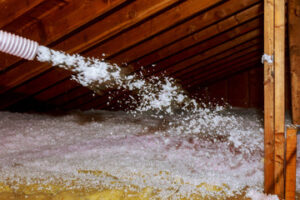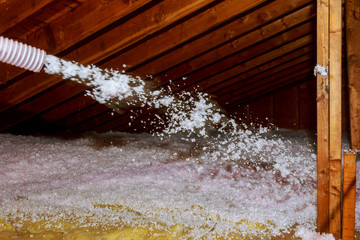When pests make their way into attics and crawl spaces, they can leave behind unhealthy odors and contaminants. The best way to avoid these risks is by removing the old insulation, cleaning and sanitizing the space, and installing modern blown-in insulation.
Start by setting up the insulation vacuum or blower, ensuring that it is properly secured and positioned according to the manufacturer’s instructions. Position disposal bags nearby, as well. Click here at https://perthinsulationremover.com.au/ for more details.
 Protective Gear
Protective Gear
Before beginning the insulation removal process it is important to wear proper protective gear, this includes safety goggles or glasses, a dust mask or respirator, long-sleeved work clothes, and sturdy boots. One company coverall is a lightweight, breathable garment that protects from dry particulates and light liquid splash. Its particle filtration efficiency test results in >98%, making it ideal for this type of work. Additionally, it is important to take regular breaks and hydrate, especially when working in a hot or confined space. It is also crucial to bag up used gloves, masks, and coveralls and dispose of them properly. This ensures that the dust and old insulation does not spread throughout your home.
Blown-in insulation is often installed in attics and cavity walls to help increase a home’s energy efficiency. It can also help with noise reduction and can aid in rodent control.
Removing Obstacles & Obstructions
It’s important to remove any obstacles in the attic space that could get in the way or impede your movements during insulation removal. This includes removing any stored items, clutter, or furniture that may be susceptible to dust or debris. You also need to be mindful of any exposed wiring or other electrical hazards that may be present in the attic. This will allow you to maneuver more efficiently and ensure a successful removal process.
Preparing The Workspace
Insulation removal is a messy and sometimes dangerous task. To ensure your safety and the success of the project, it’s important to carefully prepare your workspace before beginning the process. This will help minimize the amount of dust and debris that is created, as well as make it easier to complete the job promptly.
The first step in preparing the workspace is to assess the condition of your attic and insulation. Look for any signs of water damage, mold, pest infestation, and other issues that may compromise the performance or safety of the insulation. It’s also a good idea to check the condition of any electrical wires or plumbing pipes that may be in the attic space.
Once you have a clear understanding of the state of your insulation and attic space, remove any obstacles that might interfere with the removal process. This can be done by opening a window and directing any airflow out of the attic, as well as closing off any vents or air ducts that might be located in the attic. This will prevent any blown insulation from spreading into other parts of the home and making its way into your air ducts and through the ventilation system.
Next, a broom and dustpan should be positioned in the attic to sweep up any loose insulation and debris that is produced during the removal process. Be sure to pay special attention to corners and crevices to ensure that all insulation particles have been removed. Once this is complete, it’s time to set up an insulation vacuum or blower. Ensure that the equipment is properly positioned and securely connected to an extension cord or power source before beginning the removal process.
Finally, position a supply of heavy-duty plastic bags or containers near the extraction point to collect the blown insulation and keep it contained. Using zip ties or twist ties to tightly seal the bags will help minimize the release of any dust or fibers into the air and surrounding areas.
Once you’ve collected all of the blown insulation, be sure to dispose of it properly according to your local regulations. Also, be sure to properly store any equipment you’ve used during the process, such as an insulation vacuum or blower.
Collecting And Disposing Of The Insulation
Once you have removed the insulation, you will need to properly dispose of it. This is important because it will ensure that any harmful materials in the insulation are not released into the environment and cause damage.
You should take the time to figure out how you are going to dispose of your insulation before you start the process. There are a variety of ways to dispose of your insulation, including recycling and donation. This is a great way to reduce waste and conserve resources. If you are unsure how to dispose of your insulation, you can consult a professional to learn more about the best way to dispose of it.
When you are ready to dispose of your insulation, you will need to collect it into durable bags for safe transport and disposal. Contractor bags are ideal for this purpose, as they are substantial and long-lasting. Additionally, these bags can help to prevent the contents of the insulation from seeping out during transit and disposal. To ensure that your insulation is contained and protected, it is best to double-bag the material.
You will also need to vacuum or sweep up any dust that has been collected throughout the cleaning and collection process. Then, put any remaining dust and debris into one of the contractor bags for safe disposal. This will help to prevent any additional dust from spreading in your home.
Once the insulation is in the contractor bags, you can call your local waste management company and schedule a pickup. This is the most responsible way to dispose of your insulation, as it will ensure that the material does not end up in landfills where it could release harmful chemicals into the environment.
In addition to disposing of the insulation, you should also ensure that your home is free from any other unwanted materials, such as asbestos. This is because these materials may pose a health hazard if they are inhaled or come into contact with your skin. It is always a good idea to hire professionals for these types of projects.
Performing blown-in insulation and dust removal is an essential part of maintaining a property’s energy efficiency and indoor air quality. Whether you are a homeowner looking to improve your home’s insulation or a property manager seeking to enhance the comfort and safety of your building, understanding the process of blown-in insulation and dust removal is crucial. In this article, we will discuss the steps involved in performing blown-in insulation and dust removal and the benefits of these maintenance tasks.
Blown-in insulation is a popular method for adding insulation to existing walls, attics, and other hard-to-reach areas. This type of insulation is made of loose, lightweight materials such as fiberglass, cellulose, or mineral wool. It is an effective way to improve a property’s energy efficiency, reduce heating and cooling costs, and create a more comfortable indoor environment.
The first step in performing blown-in insulation is to assess the areas that need insulation. This could include the attic, walls, or any other areas where insulation is lacking or insufficient. Once the areas have been identified, the next step is to prepare the space for insulation. This may involve removing any existing insulation, sealing any gaps or cracks, and ensuring that the space is clean and free of debris.
The actual process of blown-in insulation involves using a special blowing machine to distribute the insulation material into the designated areas. The insulation is blown in at a high velocity, allowing it to fill in gaps, crevices, and other hard-to-reach spaces. This method ensures that the insulation is evenly distributed and provides maximum coverage.
After the blown-in insulation has been installed, it is important to perform a thorough dust removal process. Dust removal is essential for maintaining good indoor air quality and preventing respiratory issues. The blowing process can stir up dust and other particles, so it is crucial to clean and remove any debris that may have been disturbed during the insulation installation.
The dust removal process may involve using a combination of vacuuming, dusting, and air purifying methods to ensure that the indoor environment is clean and free of contaminants. This is especially important for individuals with allergies, asthma, or other respiratory conditions, as dust and airborne particles can exacerbate these health issues.
Performing blown-in insulation and dust removal offers several benefits for property owners and occupants. Firstly, blown-in insulation helps to improve a property’s energy efficiency, reducing heating and cooling costs and creating a more comfortable indoor environment. Proper insulation also helps to regulate indoor temperatures, reducing the strain on HVAC systems and extending their lifespan.
Additionally, performing dust removal after insulation installation helps to maintain good indoor air quality, reducing the risk of respiratory issues and allergies. Clean, well-insulated spaces also contribute to a healthier and more comfortable living environment for occupants, making it a worthwhile investment for property owners and managers.
In conclusion, performing blown-in insulation and dust removal is an essential part of property maintenance. By understanding the process of blown-in insulation and the importance of dust removal, property owners and managers can ensure that their properties are energy-efficient, comfortable, and safe for occupants. Whether you are looking to improve your home’s insulation or enhance the indoor air quality of a commercial building, performing blown-in insulation and dust removal is a valuable investment in the long-term health and efficiency of the property.
